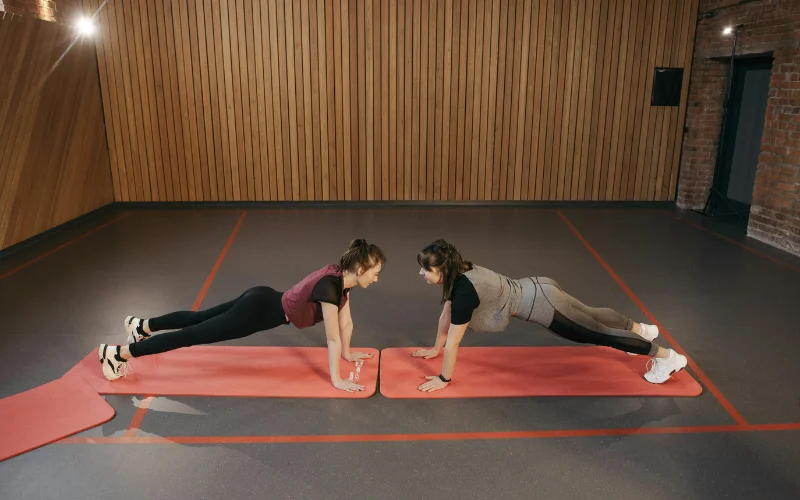Muscular endurance exercises are essential for anyone looking to improve their physical capabilities. Unlike muscular strength, which focuses on the maximum force exerted by muscles, muscular endurance emphasizes the ability to sustain prolonged physical activity. This quality is crucial not only for athletes but also for individuals engaged in daily tasks, enhancing overall quality of life. In this article, we will explore various muscular endurance exercises, their benefits, and practical tips for incorporating them into your fitness routine. Whether you are a fitness enthusiast or a beginner, understanding and improving your muscular endurance can lead to better performance and overall health.
Key Takeaways
- Muscular endurance exercises improve your ability to perform activities for longer periods.
- Key exercises include push-ups, squats, lunges, and planks.
- Incorporating resistance training and circuit workouts can enhance endurance.
- Consistency and proper nutrition are crucial for success.
- Muscular endurance is beneficial for athletes and everyday activities alike.
Understanding Muscular Endurance

Muscular endurance refers to the ability of a muscle or group of muscles to perform repeated contractions over time without succumbing to fatigue. It plays a vital role in numerous physical activities, from sports to everyday chores. For instance, activities such as running, cycling, and swimming heavily rely on muscular endurance. Improving this aspect of fitness can lead to enhanced athletic performance, increased stamina, and greater efficiency in daily tasks.
Benefits of Muscular Endurance Exercises
- Improved Performance: Enhanced muscular endurance translates directly to better performance in sports and physical activities. Athletes often find that they can train longer and perform better during competitions when their endurance is high.
- Injury Prevention: Muscular endurance exercises help strengthen muscles and connective tissues, reducing the risk of injuries. Stronger muscles can better support joints, leading to improved stability and balance.
- Increased Metabolism: Engaging in endurance training can elevate your metabolism, helping you burn more calories even at rest. This can be particularly beneficial for weight management and overall fitness.
- Enhanced Daily Activities: Everyday tasks, such as climbing stairs, lifting groceries, or playing with children, become easier with improved muscular endurance. This can lead to a more active and fulfilling lifestyle.
Effective Muscular Endurance Exercises
Here’s a list of some of the most effective muscular endurance exercises you can incorporate into your routine.
| Exercise | Muscle Groups Targeted | Benefits |
|---|---|---|
| Push-Ups | Chest, Shoulders, Arms | Builds upper body endurance |
| Squats | Legs, Glutes | Strengthens lower body endurance |
| Lunges | Legs, Glutes | Improves balance and coordination |
| Planks | Core | Enhances core stability |
| Deadlifts | Back, Legs | Builds overall body strength |
| Burpees | Full Body | Boosts cardiovascular endurance |
| High-Rep Weight Training | Various | Increases muscle endurance |
1. Push-Ups

Push-ups are a classic bodyweight exercise that targets the chest, shoulders, and triceps while building endurance. To perform a push-up, start in a plank position, lower your body until your chest nearly touches the ground, and push back up. To enhance the endurance aspect, aim for higher repetitions. Additionally, engaging in push-ups can help reduce cortisol levels, making them a great exercise to manage stress.
2. Squats

Squats are excellent for building lower body strength and endurance. They engage multiple muscle groups, including the quadriceps, hamstrings, and glutes. To perform a squat, stand with your feet shoulder-width apart, lower your body as if sitting back into a chair, and then return to standing. Aim for higher repetitions to improve endurance. You can also add variations, such as jump squats, to increase the intensity.
3. Lunges

Lunges are effective for building endurance in the legs and improving balance. Step forward with one leg, lowering your hips until both knees are bent at about a 90-degree angle, then return to standing. Performing walking lunges can further enhance endurance. To integrate a holistic approach, consider pairing lunges with somatic therapy exercises that focus on breath and movement awareness.
4. Planks

Planks are a core-strengthening exercise that also improves endurance. They involve holding a position similar to a push-up, with your body in a straight line from head to heels. Start by holding the position for 20-30 seconds, gradually increasing your time as you build strength. Planks enhance core stability, which is essential for almost every physical activity, and they can significantly improve your overall muscular endurance.
5. Deadlifts

Deadlifts are a compound exercise that targets multiple muscle groups, including the back, legs, and core. They are particularly effective for building overall body strength and endurance. To perform a deadlift, stand with your feet hip-width apart, grip the barbell (or a pair of dumbbells) with both hands, and lift it by extending your hips and knees until you are standing upright. Focus on your form to prevent injury, and aim for higher repetitions to enhance endurance.
6. Burpees

Burpees are a full-body exercise that combines strength and cardiovascular training. They involve a squat, push-up, and jump in one fluid motion, making them highly effective for improving muscular endurance and overall fitness. To perform a burpee, start in a standing position, drop into a squat, kick your feet back into a push-up position, return to the squat, and jump explosively into the air. Begin with a few repetitions and increase as your endurance builds.
7. High-Rep Weight Training

Incorporating high-repetition weight training into your routine is an effective way to build muscular endurance. Instead of lifting heavy weights for low repetitions, focus on lighter weights with higher repetitions (12-20 reps). This approach promotes muscle endurance and enhances your ability to perform activities for longer periods. Exercises can include bicep curls, tricep extensions, and shoulder presses.
Tips for Improving Muscular Endurance
- Consistency is Key: To see improvements in muscular endurance, it’s essential to work out consistently. Aim for at least 2-3 sessions per week focused on endurance exercises.
- Progressive Overload: Gradually increase the intensity of your workouts by adding more repetitions, reducing rest time, or increasing weights. This principle of progressive overload will challenge your muscles and promote growth.
- Incorporate Circuit Training: Circuit training involves performing a series of exercises back-to-back with minimal rest. This method is effective for building endurance as it keeps your heart rate elevated while targeting different muscle groups.
- Focus on Nutrition: Proper nutrition plays a vital role in enhancing muscular endurance. Ensure you are consuming enough protein to support muscle repair and carbohydrates for energy. Staying hydrated is also crucial, especially during workouts.
- Rest and Recovery: Allow your muscles time to recover between workouts. Adequate rest is essential for muscle repair and growth, which ultimately contributes to improved endurance.
- Mix It Up: Variety is important to prevent boredom and keep your body challenged. Incorporate different exercises, equipment, and training styles to continually stimulate your muscles.
Conclusion
Muscular endurance exercises are a vital component of any fitness routine, enhancing strength, stability, and overall performance. By incorporating exercises such as push-ups, squats, lunges, and planks, you can significantly improve your endurance and daily function. Remember to focus on consistency, progressive overload, and proper nutrition to achieve your fitness goals. Whether you are an athlete looking to enhance performance or someone wanting to improve everyday activities, building muscular endurance will lead to a healthier, more active lifestyle.
FAQs
How often should I perform muscular endurance exercises?
It is recommended to perform muscular endurance exercises at least 2-3 times per week. This frequency allows for adequate recovery and promotes steady improvement in endurance levels. Make sure to listen to your body and adjust your routine based on your fitness level and recovery needs.
Can I improve muscular endurance without weights?
Yes, you can improve muscular endurance without weights by using bodyweight exercises such as push-ups, squats, lunges, and planks. These exercises can be highly effective in building endurance and strength. Additionally, you can incorporate resistance bands or perform high-repetition exercises to further challenge your muscles.
What is the difference between muscular endurance and muscular strength?
Muscular endurance refers to the ability of a muscle or group of muscles to sustain repeated contractions over time without fatigue. In contrast, muscular strength is the maximum amount of force a muscle can exert in a single effort.






